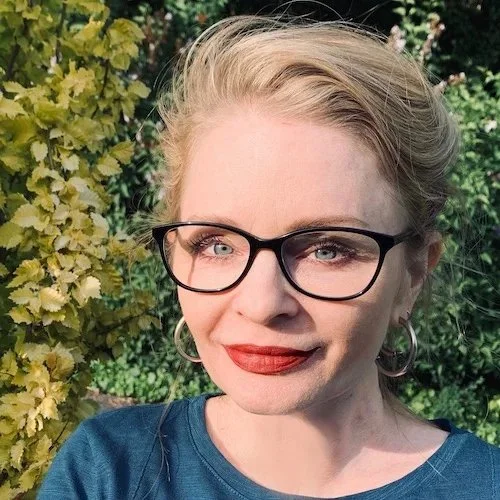Hydrological Landscapes: Global Glacier Casualty List
Glacier Graveyard, north of Bakkatjörn pond, Reykjavik, Iceland, August 17th, 2024.
In August, I traveled to Iceland to conduct field research and meet with scientists for my newest project Hydrological Landscapes. It was my first research expedition of this kind and was funded by a Humanities-, Arts-, and Design-Based Disciplines (HAD) research grant from the Oklahoma State University’s Collage of Arts and Sciences, where I’m starting my second year as the Assistant Professor of Studio Art. This funding and opportunity has reshaped my research based art making practice in several ways. It has encouraged a cross-discipline approach, prompting direct dialogue with the scientists and researchers that inspire my work. Fostering personal relationships reveals information beyond datasets, it connects scientific rigor to a researcher’s humanity, motivations, and vision. It provides an occasion to comprehend why and how a person engages with a particular subject. To know a place, even if just for a few days or weeks, diversifies your concept of the world. It shows you those things that are unknowable without an unmediated experience. Hearing a language, listening to stories and histories, and being immersed in a unique environment informs the creative senses, provoking new visions for potential artistic outputs.
Dr. Cymene Howe
Hydrological Landscapes, is a visual investigation examining the process of ice becoming ocean and its impact on our changing global landscape. My objective is to use art as a means to strengthen the connection between science and public dialogue. I believe that visual art can be a conduit that communicates scientific research in a compelling, relevant, and accessible format. This expedition to Iceland is the first step in what I hope will be a decade long project.
Dr. Cymene Howe invited me to attend her public-facing anthropological initiative Jöklar eru lífið! // Glaciers are Life! The event’s objective is to acknowledge that glaciers have vital cultural, economic and environmental importance to human communities. At this gathering the Global Glacier Casualty List (GGCL) was launched. The GGCL is a collaboration between Rice University, the University of Iceland, the Iceland Glaciological Society, Icelandic Meteorological Office, the Icelandic Museum of Natural History, the World Glacier Monitoring Service and UNESCO in support of the United Nations’ designation of 2025 as the International Year of Glaciers’ Preservation. I attended presentations by Guðfinna Aðalgeirsdóttir, Hrafnhildur Hannesdóttir, Dominic Boyer, and Cymene Howe. Following these presentations the assembled group formed a processional, walking to the western most point of Reykjavik. We stopped in a field just north Bakkatjörn pond.
Icelandic Choir at Glacier Graveyard, Reykjavik, Iceland August 17th, 2024
Launch of the Global Glacier Casualty List, north of Bakkatjörn pond, Reykjavik, Iceland, August 17th, 2024.
As we left the waterfront and walked into a grassy field. A cluster of tombstones came into view. The graveyard contained the names of fifteen glaciers carved into headstones made of ice. Each representing a glacier that has disappeared with in the last five years, including the Sarenne in France, Kilimanjaro in Tanzania, and Santa Isabel in Colombia, to name a few. Dr. Howe used this setting to introduce the GGCL and invited citizens to deliver eulogies for their country’s corresponding glacier. An Icelandic choir sang.
The Legend of Okjökull, oil on canvas, 72 x 120 in.
This same group of scientists, artists, writers, government officials, students, and citizens gathered the following day to hike to the Okjökull memorial. Okjökull is the first glacier in Iceland to “die” from the impacts of climate change. This expedition was particularly significant for me. My first glacier painting is inspired by the memorial. To visit was emotional, instilling a heightened feeling of urgency and enthusiasm to make new artwork in response to climate change.
During the processional and trek to the Okjökull memorial, I spent time with Guðfinna Aðalgeirsdóttir, Professor in Geophysics in the Earth Sciences Department at the University of Iceland. Guðfinna’s current research initiative partners with data scientists to predict the impact of rising temperatures on glaciers. Her work examines glacial responses to climate change in the past, present, and future, as well as how sea level rise around Iceland is unfolding. Ice melt from these glaciers contributes refill groundwater catchments, playing an active role in the replenishment of the island’s aquifers. Guðfinna’s research contributes a vital perspective to our understating of the cryospher and the ecologies that rely on its stability. I am very interested in exploring her research and believe that it will support creative endeavors for this project.







